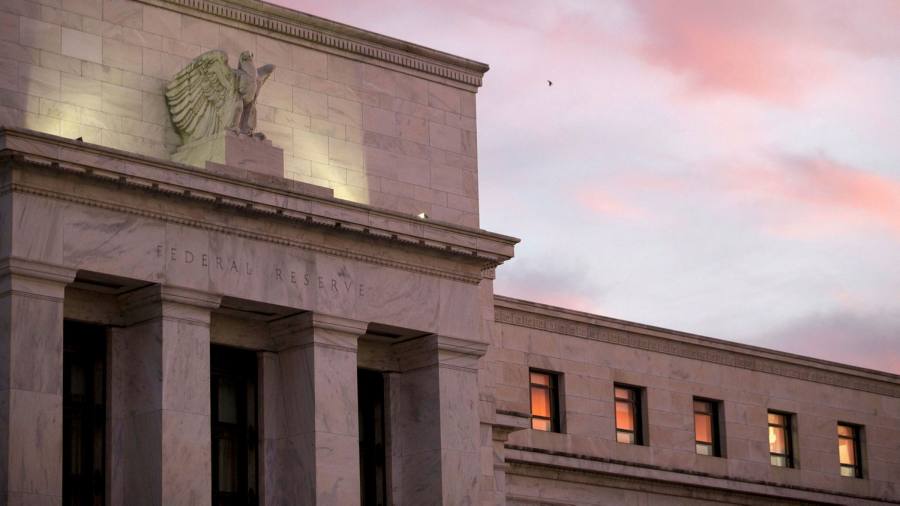[ad_1]
The writer is chief executive officer and chief investment officer of Richard Bernstein AdvisorsÂ
The Ferber Method, a sleep training technique, teaches babies to self-soothe and fall asleep on their own. It’s as much a training technique for new parents to ignore their baby’s crying as it is for the child to learn to cope by themself.Â
The US Federal Reserve should consider Ferberising bond investors and ignore future “taper tantrums†like the market disruption that occurred when the central bank signalled tighter monetary policy in 2013. The long-term health and competitiveness of the US economy may depend on bond investors’ self-soothing ability to cope with reality.
The slope of the yield curve is a simple model of the profitability of lending. Banks pay short-term rates on deposits and other sources of funds and receive longer-term rates by issuing mortgages, corporate loans, and other lending agreements.
A steeper curve, therefore, is a simple measure of better bank profit margins, and has in past cycles spurred greater willingness to lend. Historically, the Fed’s Survey of Senior Bank Lending Officers shows banks have been more willing to make loans to the real economy when the yield curve has been steeper.

With that simple model of bank profits in mind, textbooks highlight the Fed’s control of short-term interest rates as a tool to control lending. The Fed reduces banks’ cost of funding and stimulates lending when it lowers interest rates. But it increases funding rates and curtails lending when it raises short-term rates. Coupling lower short-term rates with a steeper yield curve can be a powerful fillip to bank lending.Â
However, policies in this cycle have been unique. As US short-term interest rates are near zero, the Fed has attempted to further stimulate the economy by buying longer-dated bonds and lowering long-term interest rates. Those actions have indeed lowered long-term borrowing costs in the economy, but banks’ willingness to lend has been constrained because lending margins have been narrow and risk premiums small.
Banks in past cycles might have been willing to lend despite a relatively flat yield curve because they could enhance narrow lending margins by using leverage. However, regulations after the financial crisis now limit their ability to use leverage.
This policy and regulatory mix has fuelled some of the growth in private lending. Private lenders are not subject to regulated leverage constraints and can accordingly lend profitably despite a flat curve. The growth in private lending effectively reflects an unintended disintermediation of the traditional banking system. This has meant liquidity destined for the real economy has largely been trapped in the financial economy.
The yield curve has started to steepen, and the Fed should freely allow long-term interest rates to increase for monetary policies to benefit the real economy more fully. Allowing long-term rates to increase would not only begin to restrain financial speculation as risk-free rates rise, but could simultaneously foster bank lending to the real economy.Â
Thus, the need for the Fed to Ferberise bond investors. Banks’ willingness to lend is starting to improve as the curve begins to steepen, but some economists are suggesting the central bank should continue its current strategy of lower long-term interest rates because of the potential for a disruptive “taper tantrum†by bond investors. The Fed needs to ignore investors’ tantrums and allow them to self-soothe.
The investment implications of the Fed allowing longer-term interest rates to rise seem clear. Much of the speculation within the US markets is in assets such as venture capital, special purpose acquisition vehicles, technology stocks and cryptocurrencies. These are “long-duration†investments that have longer-time horizons factored into their valuations. They underperform when longer-term rates rise because investors demand higher returns over time. Capital would be likely to be redistributed to more tangible productive assets.
Investors and policymakers should be concerned that monetary policy is fuelling speculation rather than supporting the lending facilities needed to rebuild the US’s capital stock and keep the country’s economy competitive.
Like a new parent to a baby, the Fed should not rush to coddle bond investors’ tantrums and should let the financial markets soothe themselves. Short-term financial market volatility might cause some sleepless nights, but the Fed could unleash the lending capacity of the traditional banking system by letting the yield curve steepen further.
[ad_2]
Source link





